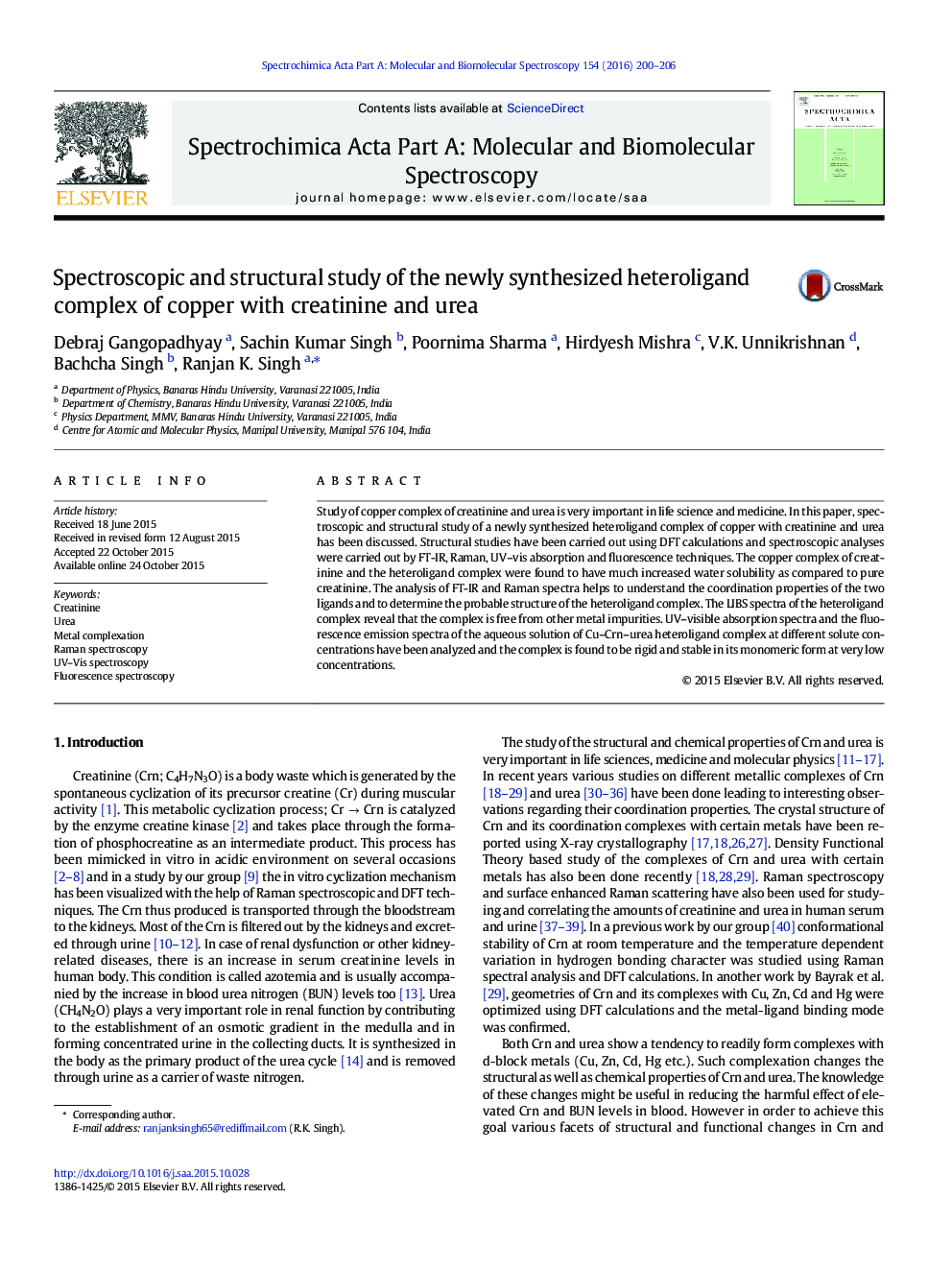| Article ID | Journal | Published Year | Pages | File Type |
|---|---|---|---|---|
| 1231794 | Spectrochimica Acta Part A: Molecular and Biomolecular Spectroscopy | 2016 | 7 Pages |
•Spectroscopic study of the heteroligand complex of copper with creatinine and urea.•Metal complexation causing drastic increase in water solubility of creatinine.•Structural analysis of the heteroligand complex from FT-IR and Raman spectra.•UV–vis and fluorescence spectra showing stability of monomer at low concentrations.
Study of copper complex of creatinine and urea is very important in life science and medicine. In this paper, spectroscopic and structural study of a newly synthesized heteroligand complex of copper with creatinine and urea has been discussed. Structural studies have been carried out using DFT calculations and spectroscopic analyses were carried out by FT-IR, Raman, UV–vis absorption and fluorescence techniques. The copper complex of creatinine and the heteroligand complex were found to have much increased water solubility as compared to pure creatinine. The analysis of FT-IR and Raman spectra helps to understand the coordination properties of the two ligands and to determine the probable structure of the heteroligand complex. The LIBS spectra of the heteroligand complex reveal that the complex is free from other metal impurities. UV–visible absorption spectra and the fluorescence emission spectra of the aqueous solution of Cu–Crn–urea heteroligand complex at different solute concentrations have been analyzed and the complex is found to be rigid and stable in its monomeric form at very low concentrations.
Graphical abstractFigure optionsDownload full-size imageDownload as PowerPoint slide
